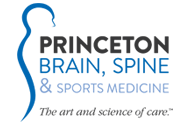Compression Fractures
Osteoporotic & Vertebral Compression Fractures
Causes, Symptoms & Treatment
Characterized by a loss of bone density, osteoporosis weakens bones and increases the risk of fracture. One of the most common osteoporosis complications is vertebral compression fractures (VCFs), which affect hundreds of thousands of U.S. patients every year. VCFs can be very painful, but in other cases, people believe symptoms to be part of the normal aging process. Whether painful or not, untreated compression fractures can lead to additional fractures, spinal deformity and gradual loss of day-to-day function.
What Is a Compression Fracture?
The spinal column: consists of 34 individual bones, called vertebrae. Between the vertebrae are intervertebral discs that allow spinal flexion while cushioning and absorbing the stress and shock incurred by body movements. Compression fractures often occur when the vertebrae collapse, and they may be the result of a minor fall or day to day bending and lifting.
Symptoms of VCF
In addition to pain, vertebral compression fractures may also cause:
- Loss of height / shrinking with age
- Kyphosis (hunchback)
- Loss of balance
- Neurological symptoms like numbness, tingling or weakness
- Increased risk of additional falls & fractures
Compression Fracture Treatment
Most compression fracture cases can be successfully treated using medications to relieve pain, along with bedrest and back bracing. Spinal braces help relieve pain by immobilizing the fracture and reducing the height loss that occurs as a result of the compression. The brace is discontinued when x-rays show fracture healing and no change in position of the vertebrae.
In rare instances, severe compression fractures may require surgery to implant spinal hardware like hooks, rods, plates or screws. These components are used to fuse vertebrae together, increase spinal stability and reduce chances of subsequent injury. Recovery from this type of procedure can take several months.
Princeton Brain, Spine & Sports Medicine neurosurgeons also offer minimally invasive techniques to treat compression fractures. These include vertebroplasty and kyphoplasty, which use orthopedic cement to rebuild the vertebral space and return it to its original height. These procedures help to relieve pain, prevent deformity and reduce the chance of future spine fracture by strengthening weak vertebral bodies. Most patients experience immediate pain relief after these minimally invasive procedures, and they are able to return quickly to daily activities.
Prevention Is the Key to Avoiding Compression Fractures
The best way to prevent osteoporosis and related compression fractures is to keep bones strong by adopting a healthy lifestyle. This includes a well-balanced diet rich in calcium and vitamin D, along with regular exercise, weight-bearing activity and avoidance of smoking and excessive alcohol use.
If you have osteoporosis and are experiencing pain or other symptoms, call the Princeton Brain, Spine & Sports Medicine offices in NJ and PA: 609.921.9001 or 215.741.3141. Our neurosurgical team will evaluate your condition and help you develop an informed treatment plan that expedites the return to a healthy, pain-free life.
Request an Appointment
Submit an appointment request on our patient portal or contact our New Jersey and Pennsylvania campuses to speak with a patient advocate.
